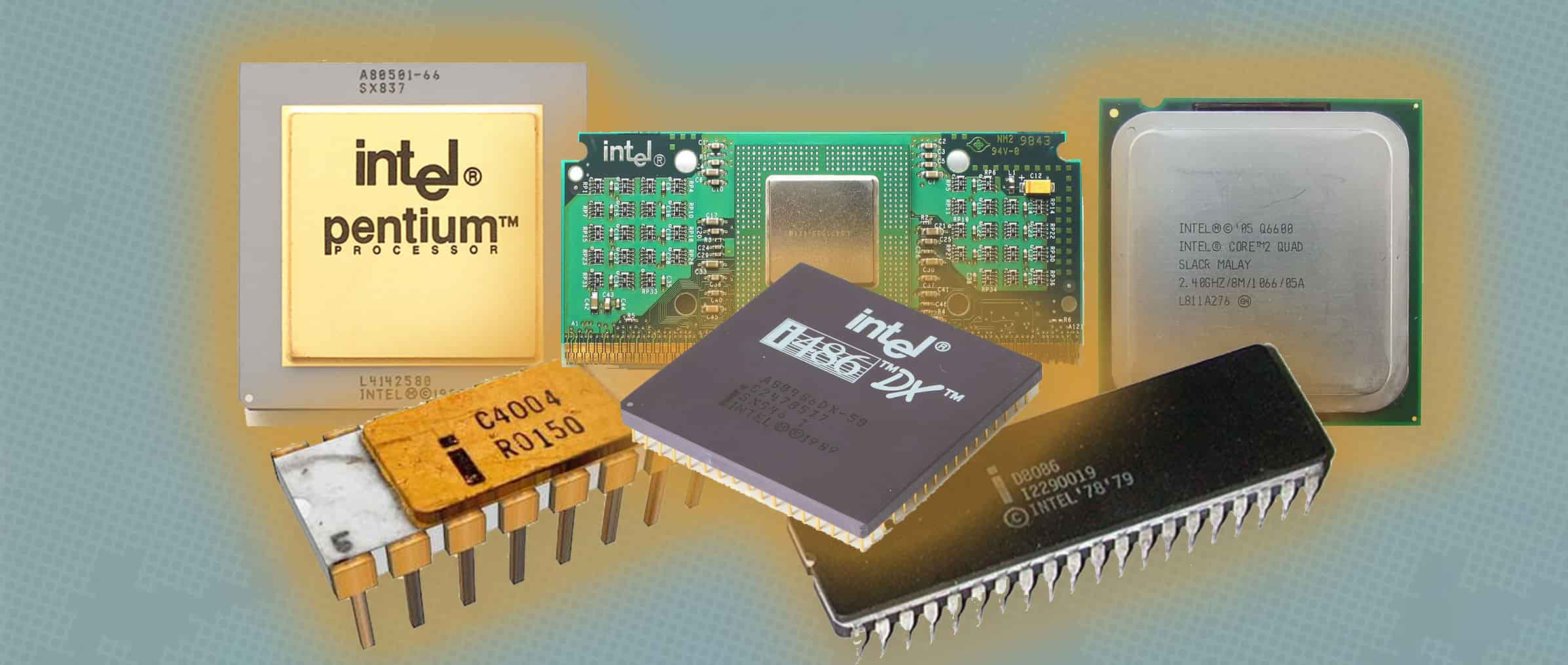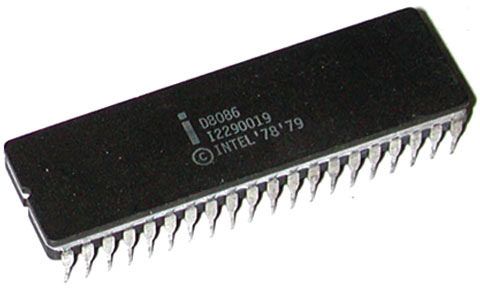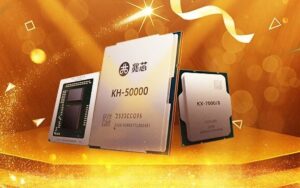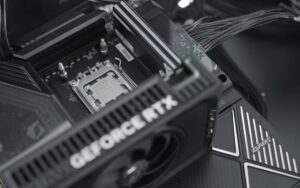
July 1968 marked the founding of NM Electronics, which was soon renamed as Intela combination of “Integrated Electronics“. The semiconductor market giant began its journey with the production of memory chips, until making a transition to a product that it invented itself: microprocessors.
In this article I listed 6 legendary Intel processors.
Intel 4004 – Intel’s first processor

After a short experiment with DRAM chips, Intel changed course, driven under a contract with the Japanese company Busicom. In 1969, this company hired Intel to develop a set of chips for its line of calculators.

As reported in the book “The Innovators” – a biography of the digital revolution”, Ted Holf, Intel’s 12th employee was the key player in the entire chip revolution that the company achieved, applying the concept of a chip with multiple functions. Leaving aside what was done until then: designing many types of chips, each with a different function.
From Holf’s concept, endorsed by Robert Noyce, co-founder of Intel, the microprocessor emerged. And Intel’s first product in this sense, and which equipped Busicom’s calculators, was the Intel 4004. Simply the world’s first commercial microprocessor. A product that was not just a milestone for Intel, it was a foundation for an entire market that continues to evolve to this day.
Intel 8086 – x86 architecture

If the Intel 4004 established the concept of the microprocessor, the Intel 8086, launched in 1978, the year in which the company completed 10 years on the market, consolidated one of the most famous architectures of all time. This 16-bit processor (in contrast to the 4 bits of the 4004) marked a significant evolution.
Thanks to a highly assertive marketing campaign, Intel managed to establish the x86 architecture as the future of computing. And the bet paid off. To date, the x86 architecture is widely used in various segments, from chips for home PCs to servers.
A slightly modified version of the Intel 8086 was used in the IBM PC, one of the most important home computers of all time.
This wasn’t the only time Intel nailed its marketing. Who doesn’t remember the legendary slogan “Intel Inside”? For many years, for consumers less familiar with technical details, the simple presence of an Intel chip in a computer was reason enough to choose that product.

486 – more than 1 million transistors

In 1989, Intel launched the legendary 80486DX. It was notable for being the first processor to surpass the 1 million transistor mark, more precisely 1.2 million transistors.
In 1992, Intel released the 80486DX2 model, which became widely popular among users who wanted a gaming computer.
While nowadays Intel is in 7nm lithography, at the time this processor was produced in 600 nm.
Intel Celeron 300A – an overclocking legend, despite Intel itself

Mentioning the Celeron in a list of iconic Intel processors may generate some displeasure for some, as these chips have always been associated with low performance, but allow me to bring here the iconic Celeron 300A.
This model is interesting on many levels, mainly because it generated displeasure within Intel itself with the direction users were taking with this processor.
Launched in 1998, the Intel Celeron 300A had an excellent ability to go beyond factory specifications. Its ability to be overclockable was remarkable. The factory clock was 300 MHz, but some users were able to reach 450 MHz, 460 MHz.
Surprisingly, Intel, instead of praising this capability, was against it. Propagating that this could ruin the processor and even considering denying the warranty to those who had a problem after changing the characteristics of the chip.
Pentium – the greatest brand in the history of processors

It is impossible to put together a list of legendary processors without mentioning the Pentium line. Arguably, the greatest milestone in the history of CPUs. A name that is in the popular imagination of the history of computing.
Intel definitely knows how to work and brand names, and the name Pentium (in reference to the fact that it is the fifth generation of Intel processors) was another success that the company had in terms of product communication, and also in technological matters. .
Launched in 1993, the Pentium established a new level for the company in terms of chip architecture and consumer relations. At the time, some games included the Pentium option in their quality settings, which aimed to provide an optimized experience for these chips.
The name Pentium was so representative that it was precisely this brand, in its version known as Pentium Pro, launched in 1995, that Intel chose to illustrate the processor options intended for professional workstations, such as servers.
Over the years, Intel has renewed and improved the Pentium in countless ways, from the improved Pentium MMX, from 1996, to the famous Pentium 4, launched in 2000.
Core 2 Quad Q6600 – time to play with 4 cores

2007, in the year in which the transistor, an invention that was fundamental for Intel to build what became known as a microprocessor, turned 60, the company put the quad-core on the market Core 2 Quad Q6600. Based on the Core architecture, which made its debut the previous year, Intel was talking about an 80% performance increase when compared to the also imposing Core 2 Extreme, which was dual-core.
The processor had 4 physical cores, but it adopted what is called a “2+2” or “MCM” (Multi-Chip Module) arrangement. The Q6600 is made up of two dual-core dies, each with two cores, placed together in the same package. The first monolithic quad-core processor was the AMD Opteron, launched in 2006 for the server market.
it wasn’t exactly the first processor with 4 physical cores (a title that belongs to AMD Opteron, launched in 2006 for the server market). It was an arrangement between 2 physical cores and 2 threads, the logical cores.
At a time when most people opted for 2-core models with high clock speeds – around 3 GHz – Intel came with a product for the end consumer with this 4-core proposal, delivering great performance, mainly in programs that were able to make use of the 4 colors.
This processor hit the market in January of that year for a whopping US$851, but dropped in price in the following months, selling for US$266. According to this December 2007 report from Folha de S. Pauloin Brazil, the Core 2 Quad Q6600 cost R$750.
So, what other Intel processor would you include as legendary? Tell us below in the comments.
Source: https://www.hardware.com.br/artigos/6-processadores-lendarios-intel/


